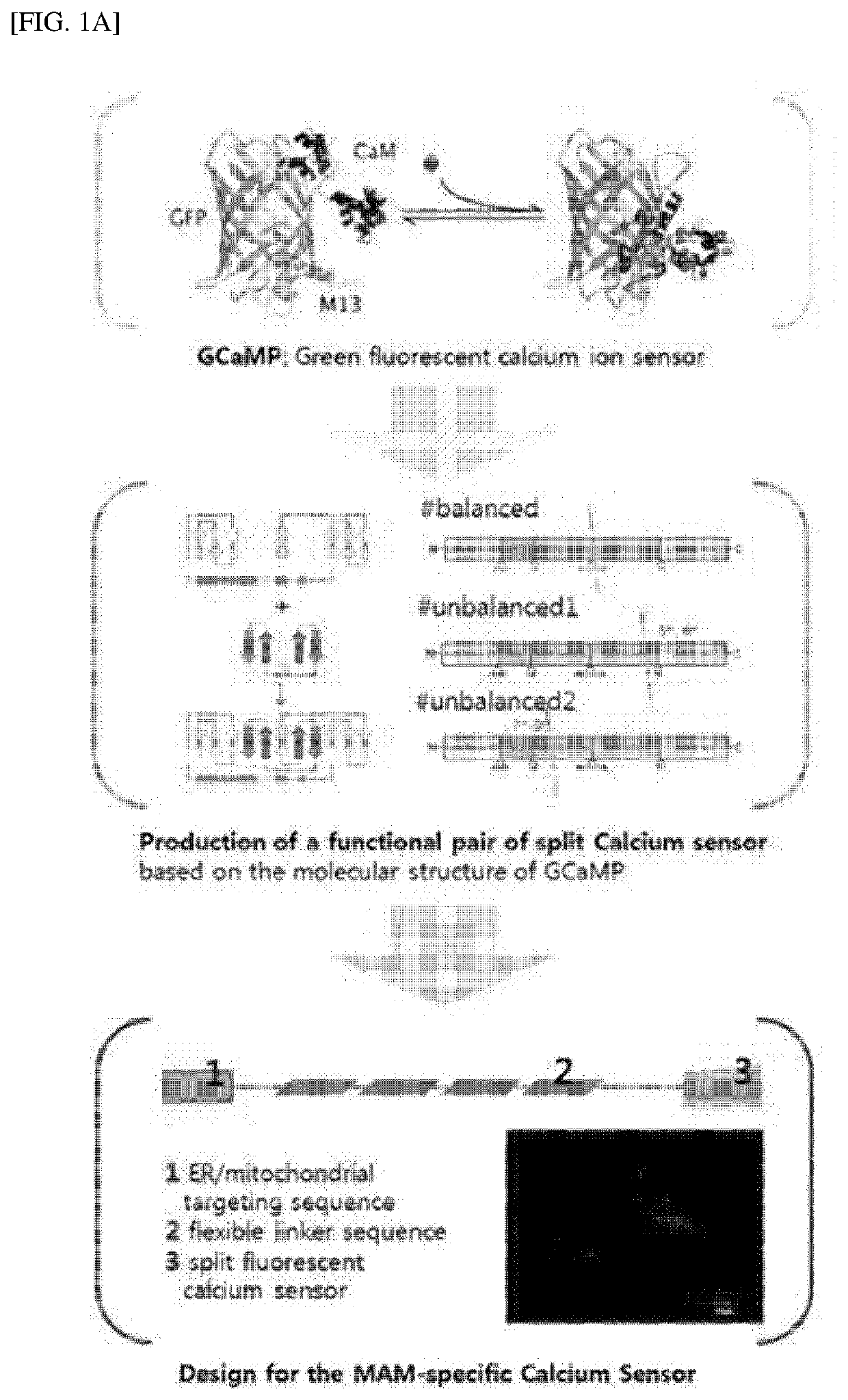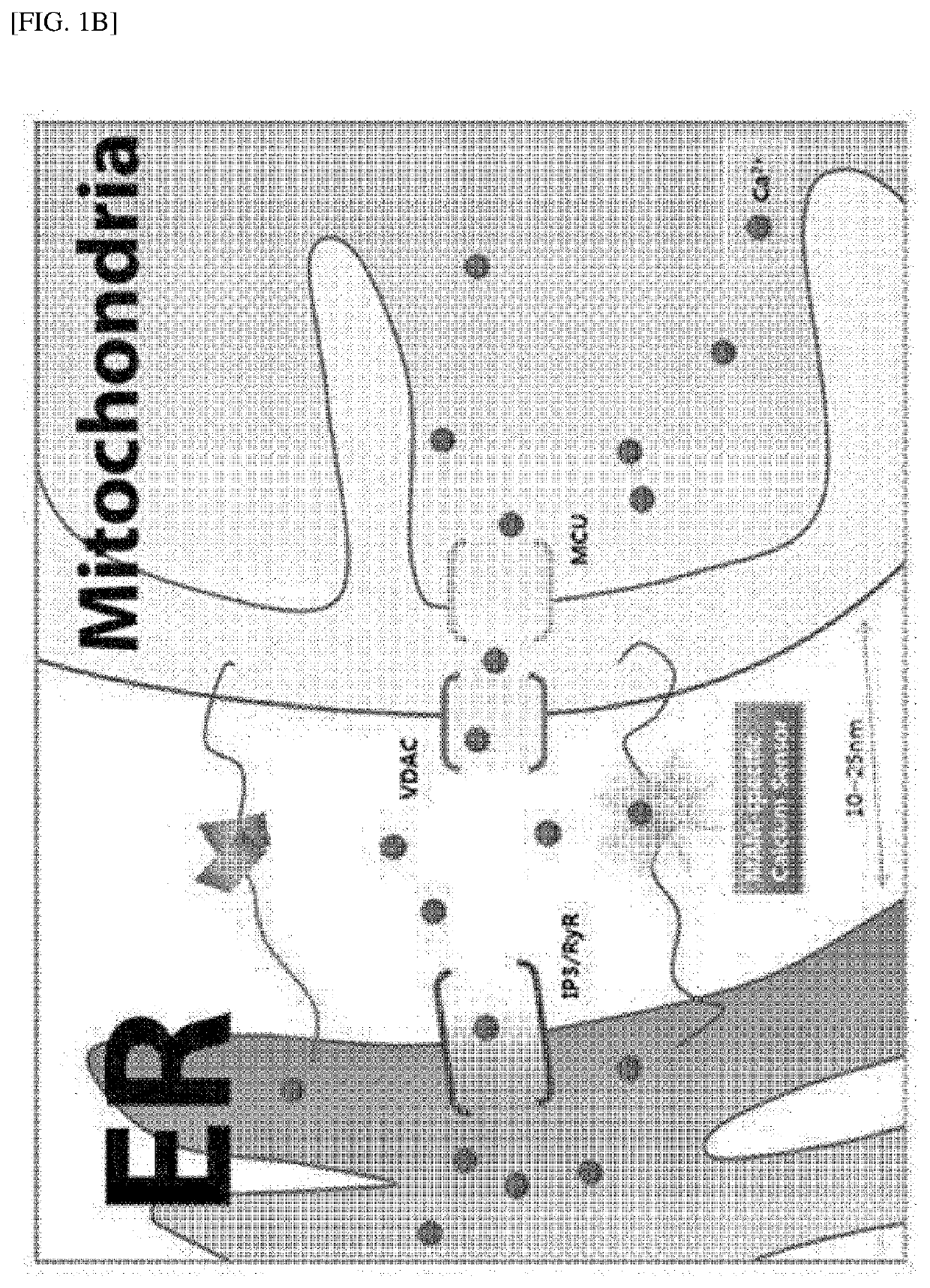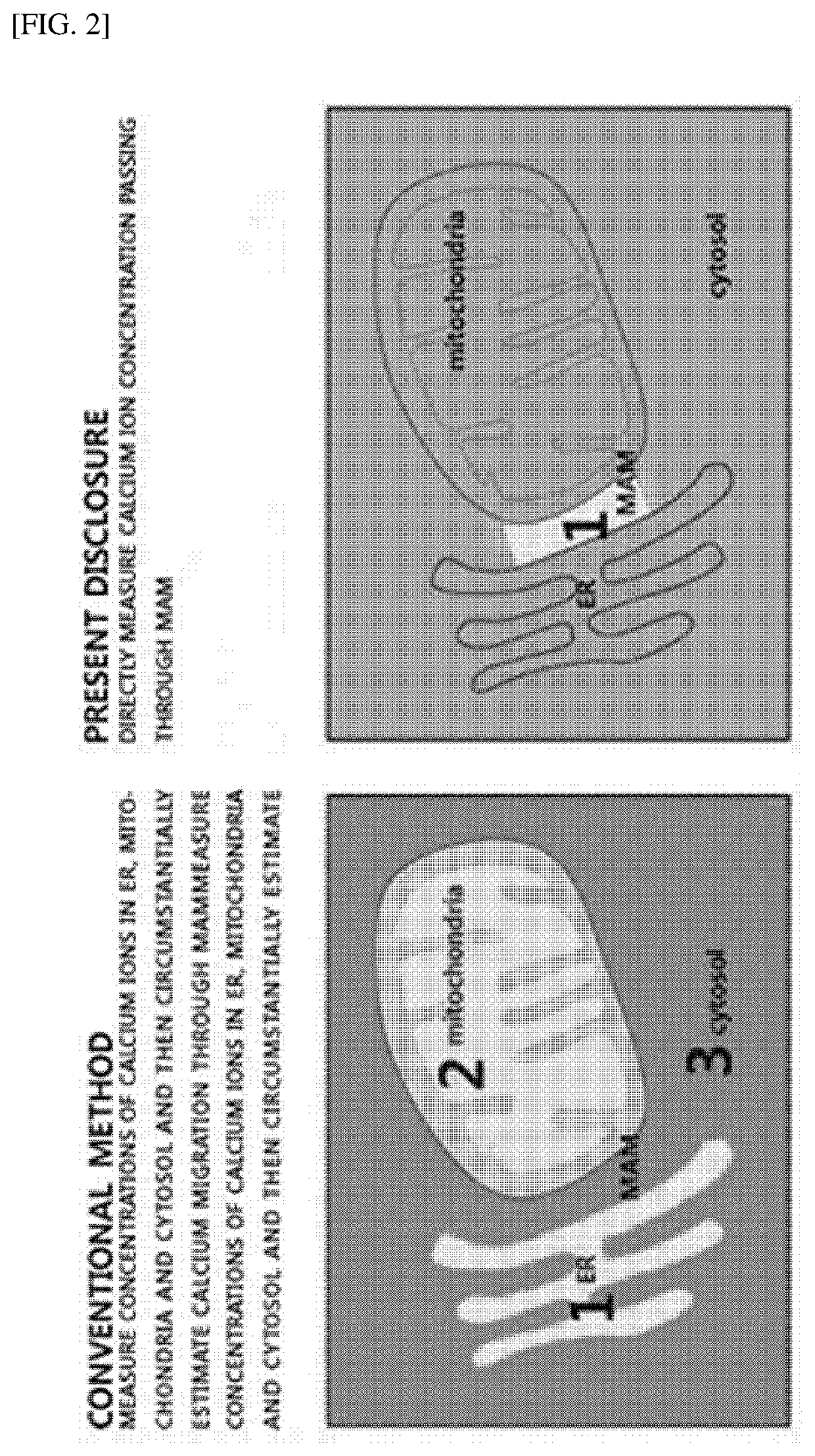Mam-specific fluorescence calcium sensor and use thereof
a technology of fluorescence calcium sensor and endoplasmic reticulum, which is applied in the field of mitochondria-associated endoplasmic reticulum membrane (mam)-specific fluorescent calcium sensor, can solve the problem of no experimental technique useful for observing a microcompartment, and achieve the effect of simple and accura
- Summary
- Abstract
- Description
- Claims
- Application Information
AI Technical Summary
Benefits of technology
Problems solved by technology
Method used
Image
Examples
example 1
ion of Split GCaMP
[0064]1-1. Insertion of Leucine Zipper Sequence for Experimental Verification
[0065]① Fos Leucine Zipper
[0066]A leucine zipper sequence (the 279 bp gene sequence corresponding to the sequence of amino acids 118 to 210) of a mouse Fos gene (FBJ osteosarcoma oncogene, Mus musculus, Gene ID: 14281) was amplified based on a pEGFP-C3 vector and inserted as a Fos leucine zipper sequence of a recombinant gene.
[0067]To this end, a mouse cDNA library was used as a template and subjected to PCR using the following primers.
Fos-(118aa-210aa) forward primer:5′-CCG GGA ATT CTG GGC AGA GCG CAG AGC ATC G-3′Fos-(118aa-210aa) reverse primer:5′-CGC GGA TCC TCA AAG GTC ATC GGG GAT CTT GCA G-3′
[0068]The amplified DNA was treated with EcoR I and BamH I restriction enzymes and then inserted into a pEGFP-C3 vector subjected to cleavage with EcoR I and BamH I restriction enzymes using a T4 ligase, thereby constructing a pEGFP-C3-Fos(118aa-210aa) vector.
[0069]② Jun Leucine Zipper
[0070]To con...
example 2
ion of Calcium Reactivity of Split GCaMP
[0077]2-1. Transfection of Recombinant Vector
[0078]HEK293 cells cultured on a glass-bottomed dish for 12 hours were transfected with the four gene combinations constructed in Example 1, using a lipofectamine 2000 reagent in accordance with a manufacturer's protocol.
[0079]2-2. Real-Time Observation Using Fluorescence Microscope
[0080]After the transfection, HEK293 cells were cultured in 10% fetal bovine serum (FBS)-containing DMEM under conditions of 37° C. and 5% CO2 for 24 hours, and then the medium was replaced with a calcium-free imaging buffer (145 mM NaCl, 2.5 mM KCl, 10 mM glucose, 10 mM HEPES pH 7.4, 1 mM MgCl2), followed by a time-lapse imaging test performed using a fluorescence microscope every second.
[0081]As stimuli for a calcium reaction, ionomycin (Sigma-Aldrich) and a CaCl2 aqueous solution were treated to have a final working concentration of 10 μM and 1 mM, respectively.
[0082]As a result, as shown in FIG. 4, the combination of ...
example 3
ion of MAM-Specific Recombinant Nucleic Acid Molecule
[0085]3-1. Construction of Mitochondria-Targeting, Recombinant Nuclear Acid Molecule Using AKAP1
[0086]① Insertion of Mitochondria-Targeting Sequence
[0087]A mitochondria-targeting sequence (the 90 bp gene sequence corresponding to the sequence of amino acids 34 to 63) of a mouse Akap1 gene (A kinase (PRKA) anchor protein 1, Mus musculus, Gene ID: 11640) was amplified using a pEGFP-N1 vector, thereby constructing a mitochondria-targeting vector.
[0088]To this end, a mouse cDNA library was used as a template and subjected to PCR using primers of the following sequences.
AKAP1-(34aa-63aa) forward primer:5′-ctagctagccaccatggcaatccagagcgttcg-3′AKAP1-(34aa-63aa) reverse primer:5′-ccgctcgagttattacgagagaaaaaccaccaccagcc-3′
[0089]The amplified DNA was treated with Nhe I and Xho I restriction enzymes and inserted into a pEGFP-N1 vector that were previously subjected to cleavage with Nhe I and Xho I restriction enzymes using a T4 ligase, thereby...
PUM
| Property | Measurement | Unit |
|---|---|---|
| distance | aaaaa | aaaaa |
| time- | aaaaa | aaaaa |
| time- | aaaaa | aaaaa |
Abstract
Description
Claims
Application Information
 Login to View More
Login to View More - R&D
- Intellectual Property
- Life Sciences
- Materials
- Tech Scout
- Unparalleled Data Quality
- Higher Quality Content
- 60% Fewer Hallucinations
Browse by: Latest US Patents, China's latest patents, Technical Efficacy Thesaurus, Application Domain, Technology Topic, Popular Technical Reports.
© 2025 PatSnap. All rights reserved.Legal|Privacy policy|Modern Slavery Act Transparency Statement|Sitemap|About US| Contact US: help@patsnap.com



